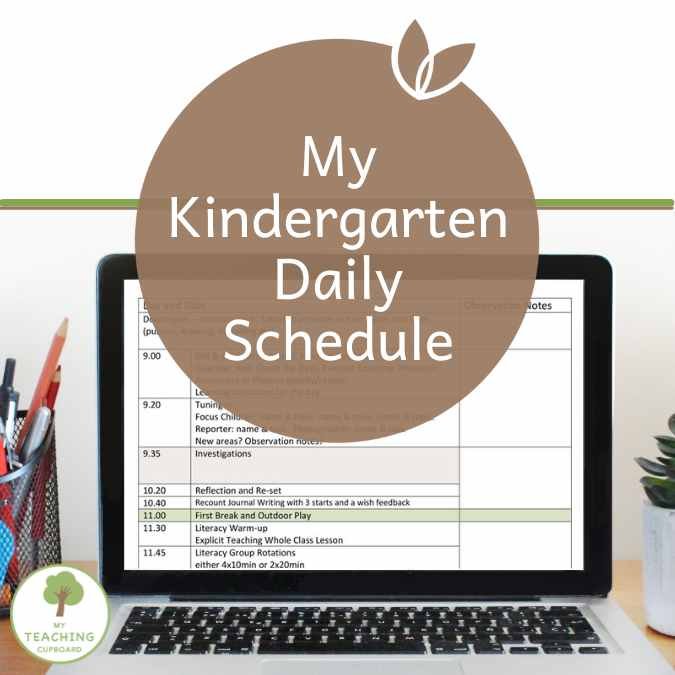
So you see that Investigation Time is much more than just free play.
It’s a carefully planned session in our day where learning invitations and provocations act as springboards, guiding my kindergarten students toward meaningful interactions with the curriculum.
Whether they’re investigating natural objects, designing with blocks, or experimenting with loose part patterns, my children are developing foundational skills in literacy, numeracy, problem-solving, and social interaction—all through the power of play.
Reflection & Re-set – Discussing and Celebrating Learning
After Investigation Time, we gather for Reflection Time. This is another vital component of our play-based classroom.
Some teachers use Reflection Time as a basic recap of investigations but it should also be an opportunity for students to verbalise their experiences, connect their discoveries to learning objectives, and build social-emotional skills.
As Kathy Walker, the creator of the Walker Learning Approach, emphasises, “Reflection time is not show and tell. It helps identify the learning that has occurred during the session and, most importantly, acts as a bridge linking play with formal lessons throughout the day.”
Even on busy days, I prioritise this session to reinforce the purpose and value of our play-based learning.
Reflection Time begins with the Photographer and Reporter sharing their observations. The Photographer might present photos taken during investigations, sparking discussion on how their peers interacted with materials or tackled challenges. The Reporter provides a way of recalling main events or highlights of the day trying to stimulate students to share their own thoughts about what they saw or learned.
E.g., One morning the reflection of a child on his own effort to construct a tall tower of blocks gave us a ready opportunity to speak about balancing and stabilizing. When the tower tipped over, the student showed signs of frustration, so a short lesson in balancing objects was impromptu given. This resulted in a subsequent math lesson where we discussed equality and balance and extended this teachable moment by connecting math to the play.
Much of the responsibility is on the instructors to ask open-ended questions throughout this session that prompt students to develop a critical thinking approach to their experiences, often in the form of What did you find?, Why do you think that is?
Reflectively, as Reggio Emilia pioneers have observed, reflection fosters metacognition, which helps the children develop self-directed learning skills and become aware of their thoughts.
A great reflection turns play into important, purposeful learning experiences that may carry on back home into future lessons and activities.
Reflection is where play-based learning truly comes to life. It helps children recognise that their play is important learning time, reinforces curriculum goals, and builds a sense of community as they share their insights.
For a deeper look into how I run this important session, read my post on Reflection Time in a Play Based Classroom: How to Run It Effectively.
